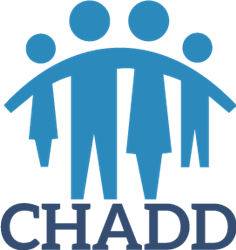[ad_1]

CHADD Logo
When not properly identified, diagnosed, and treated, ADHD can have serious consequences, including academic and work failure, family stress and disruption, depression, relationship problems, substance abuse, accidental injuries, and financial and legal difficulties.
LANHAM, Md. (PRWEB)
October 27, 2020
Everyone can have difficulty sitting still, paying attention, or controlling impulsive behavior now and then. But for some, these issues are so pervasive and persistent that they interfere with the activities of daily life. This indicates the presence of attention-deficit/hyperactivity disorder (ADHD), a common neurodevelopmental disorder that affects 10 percent of school-age children and more than four percent of adults in the United States. How do you know when you or a loved one should seek a professional evaluation? As we mark ADHD Awareness Month in October, CHADD (Children and Adults with Attention-Deficit/Hyperactivity Disorder)―the leading nonprofit organization providing support, training, education, and advocacy for the ADHD community―explains the signs to look for.
The classification system found in the Diagnostic and Statistical Manual, Fifth Edition (DSM-5), is the gold standard used by healthcare professionals when evaluating patients for ADHD. To be diagnosed, children should have six or more symptoms of the disorder present, while adolescents age 17 and older and adults should have at least five symptoms present. The DSM-5 lists three different presentations of ADHD―Predominantly Inattentive, Hyperactive-Impulsive, and Combined. The symptoms of each are summarized below. The DSM-5 also requires professionals to determine the severity of the disorder as mild, moderate, or severe, as ADHD affects individuals to varying degrees.
ADHD Predominantly Inattentive Presentation
- Fails to give close attention to details or makes careless mistakes
- Has difficulty sustaining attention
- Does not appear to listen
- Struggles to follow through with instructions
- Has difficulty with organization
- Avoids or dislikes tasks requiring sustained mental effort
- Loses things
- Is easily distracted
- Is forgetful in daily activities
ADHD Predominantly Hyperactive-Impulsive Presentation
- Fidgets with hands or feet or squirms in chair
- Has difficulty remaining seated
- Runs about or climbs excessively in children; extreme restlessness in adults
- Difficulty engaging in activities quietly
- Acts as if driven by a motor; adults will often feel inside as if they are driven by a motor
- Talks excessively
- Blurts out answers before questions have been completed
- Difficulty waiting or taking turns
- Interrupts or intrudes upon others
ADHD Combined Presentation
- Meets the criteria for both inattention and hyperactive-impulsive ADHD presentations
To receive a diagnosis, symptoms need to begin before age 12; be present in more than one setting; interfere with functioning at home, school or work, and social settings; and cannot be better explained by another disorder. It is important to note that symptoms can change over time, so children may fit different presentations as they get older, and adults may fit different presentations during various stages of life.
As there is no single test to diagnose ADHD, a comprehensive evaluation by a professional is necessary to establish a diagnosis, rule out other causes, and determine the presence or absence of co-existing conditions. Such an evaluation requires time and effort, and should include a careful history and a clinical assessment of the individual’s academic, social, and emotional functioning and developmental level. There are several types of professionals who can diagnose ADHD, including clinical psychologists, clinical social workers, nurse practitioners, neurologists, psychiatrists, and pediatricians.
When not properly identified, diagnosed, and treated, ADHD can have serious consequences, including academic and work failure, family stress and disruption, depression, relationship problems, substance abuse, accidental injuries, and financial and legal difficulties. ADHD is highly manageable using an individualized, multimodal treatment approach that can include behavioral interventions, parent and patient training, educational and workplace support, and medication.
To learn more, visit CHADD.org or call 301.306.7070.
About CHADD
CHADD is the leading resource on attention-deficit/hyperactivity disorder (ADHD), providing support, training, education, and advocacy for the 17 million children and adults in the United States living with ADHD, their families, educators, and healthcare professionals. As home to the National Resource Center on ADHD, funded by the U.S. Centers for Disease Control and Prevention, CHADD is the most trusted source of reliable, science-based information regarding current medical research and ADHD management.
Share article on social media or email:
[ad_2]

